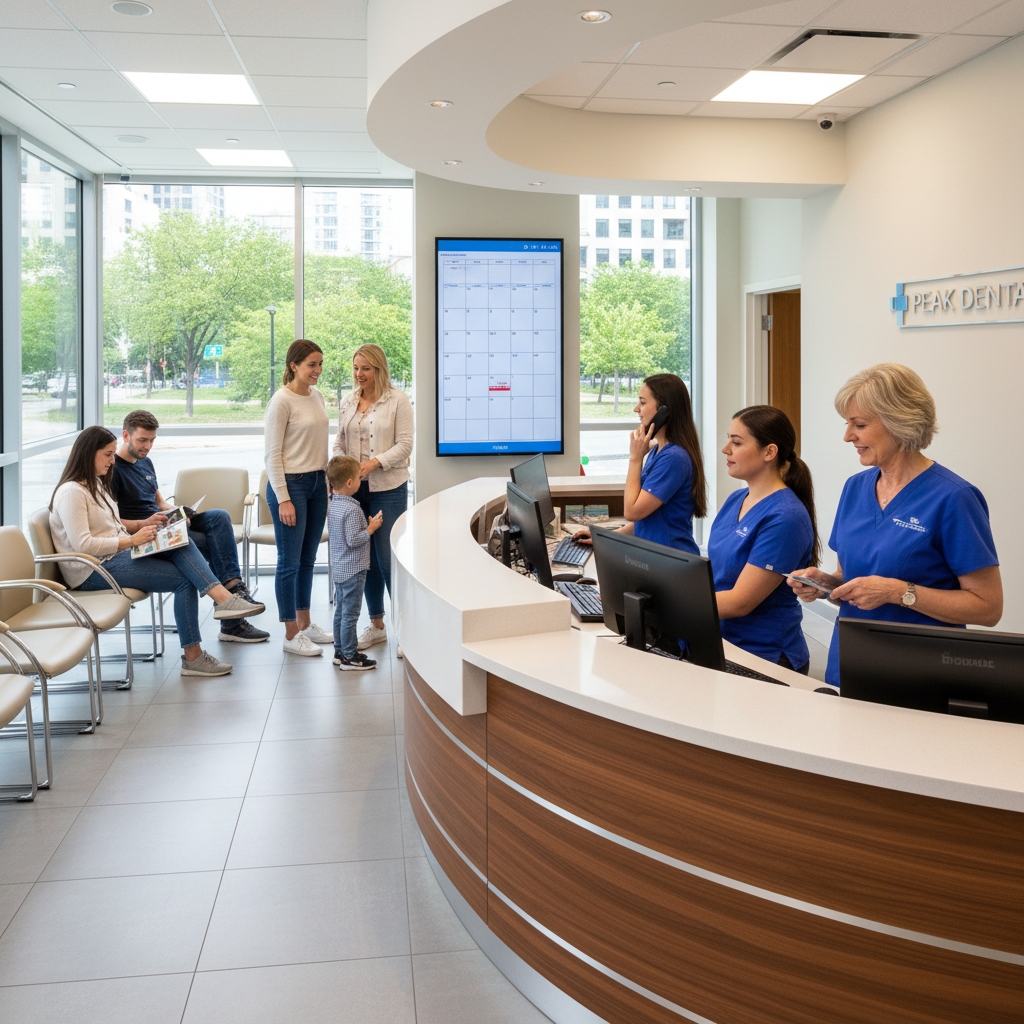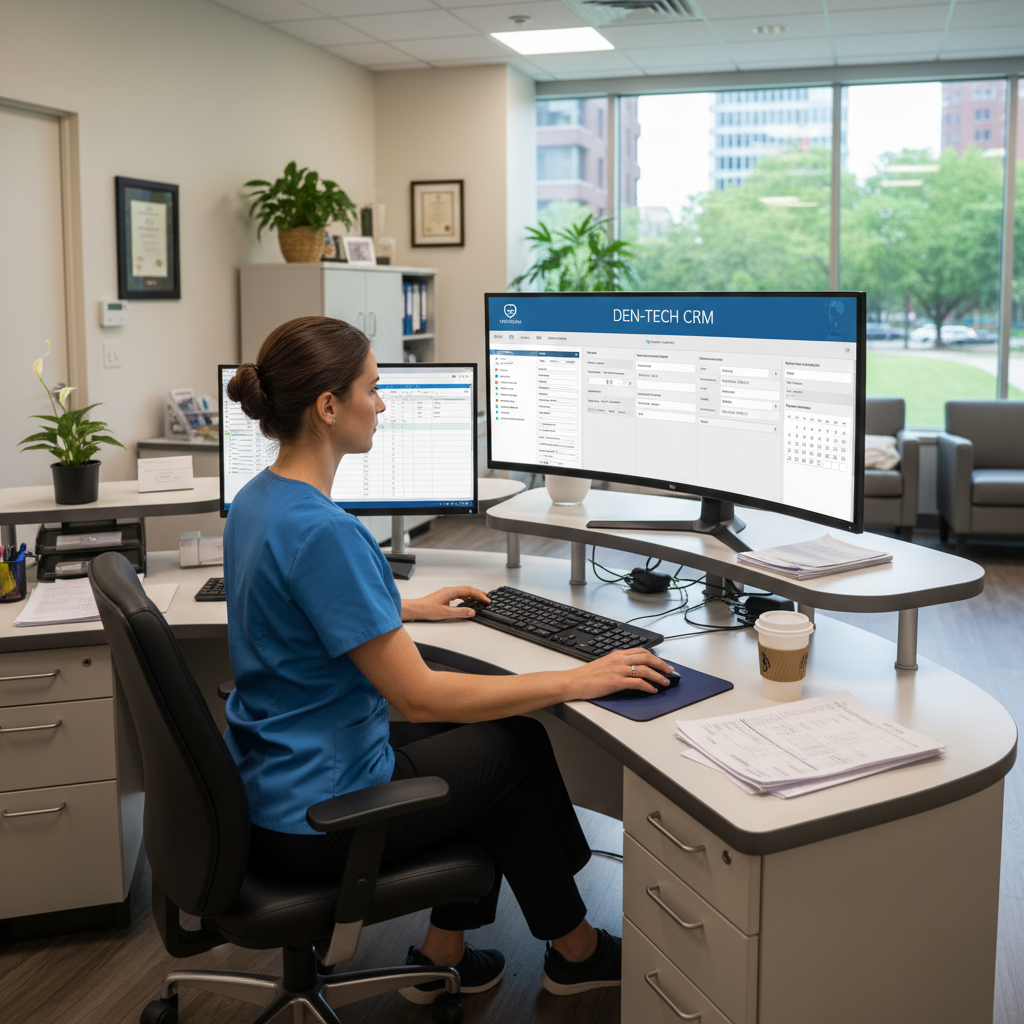












Blog Article


The $3.12 Billion Opportunity: How Patient Communication Transformation is Reshaping Dental Service Organizations
Every missed call is a missed opportunity - not just for revenue, but to care for a patient in need.
If you're leading a DSO or managing dental operations, you already feel the weight of this reality. Your teams are overwhelmed, patients expect instant responses, and the traditional phone-based approach simply can't keep up. We understand these challenges because we've seen them firsthand across hundreds of practices.
The good news? A transformation in patient communication is underway, and it's creating unprecedented opportunities for growth-minded dental organizations. With the AI in dentistry market projected to reach $3.12 billion by 2034, forward-thinking DSOs are turning communication challenges into competitive advantages - achieving ROI in months, not years.
The Hidden Cost of Missed Connections
Let's talk numbers - because the data tells a story every DSO executive needs to hear.
The average dental practice misses 300 calls per month. Think about that. When 33% of calls go unanswered during business hours and nearly 80% of these missed calls are booking-related, we're talking about real patients with real needs being turned away. Even more striking: 65% come from potential new patients, each representing approximately $1,000 in annual revenue.
But here's what keeps operations directors up at night: it's not just about missed calls. Today's patients - especially younger generations - expect immediate responses. [64% of leads book within 10 minutes or not at all]. When 47% of bookings occur outside business hours, traditional 9-to-5 phone coverage leaves massive gaps in patient care.
We've heard the frustration in your voice when you tell us about staff burnout. With 82% of dentists reporting major stress and 75% citing staff shortages as their primary challenge, asking already overwhelmed teams to handle more isn't sustainable. It's why smart DSOs are embracing technology - not to replace their teams, but to support them.
What Industry Leaders Are Saying About Dental's Digital Future
Major analysts are painting a clear picture of where dentistry is headed, and it's both exciting and urgent.
McKinsey's latest healthcare analysis reveals that 85% of healthcare leaders are exploring or have adopted generative AI, with 64% already reporting positive ROI. They're not suggesting you build these solutions yourself - instead, they recommend partnering with specialized vendors who understand your industry's unique needs.
The dental-specific opportunity is even more compelling. While the broader dental market grows steadily, the AI segment is exploding at 22.3% CAGR. Deloitte's 2025 predictions emphasize that we're moving from experimentation to real implementation - this is the year organizations extract genuine value from their technology investments.
For DSOs, this means the window for competitive advantage is narrowing. Early adopters are already seeing results, and the rest of the market is catching up fast.
Success Stories: How Leading DSOs Are Winning
We've watched pioneering DSOs transform their patient communication, and the patterns are remarkably consistent.
Organizations implementing comprehensive communication strategies are seeing dramatic results. Facial & Oral Surgery Associates captured 41 new patients in just 30 days, achieving a 61x ROI. This multi-location oral surgery practice was missing 650-700 calls monthly—that's 17-20% of their total call volume. With Resonate AI, they transformed those missed opportunities into $81,000 in production potential. Even their doctors were impressed—Dr. Dauterive called while on vacation and couldn't tell he was speaking with AI, praising how it maintained their practice's personal touch.
The secret? It's not about adding more technology - it's about creating seamless patient experiences. Practices enabling text responses after missed calls see dramatic appointment increases. Those offering true omnichannel communication average 30 appointments per month versus just 10 for practices with basic online booking.
What excites us most is how these solutions support your existing teams. AI-powered systems can handle 80% of routine requests, giving your staff time to focus on complex patient needs while ensuring no opportunity slips through the cracks.
Meeting Patients Where They Are: The Generational Imperative
Your future patients are already here, and they communicate differently than previous generations.
Millennials and Gen Z now comprise 42% of the U.S. population, with over 70% preferring digital communication. This isn't just preference - it's expectation. 76% of Millennials are more likely to choose a provider offering online scheduling. Even more telling: 27% of Gen Z have already switched doctors for better digital experiences.
The financial implications are staggering. Millennials account for 21% of healthcare spending, while Gen Z's economic power is projected to reach $12 trillion by 2030. These patients don't just want digital options - they demand them. 30% of Gen Z expect text responses within 10 minutes.
We're not suggesting you abandon traditional communication - many patients still prefer phone calls. But offering both? That's how you capture every opportunity and serve every patient, regardless of their preference.
Your Roadmap to Communication Excellence
Based on our experience helping practices transform their patient communication, here's a practical approach that works:
Months 1-3: Build Your Foundation
- Assess current communication gaps and patient feedback
- Choose integrated platforms that work with your existing systems
- Focus on staff training and change management
- Start with one location if you manage multiple practices
Months 4-6: Enhance and Expand
- Deploy AI assistants for after-hours coverage
- Activate automated appointment reminders and confirmations
- Launch patient-preferred channels (text, web chat)
- Monitor early results and gather team feedback
Months 7-12: Optimize and Scale
- Analyze data to identify what's working
- Expand successful approaches across all locations
- Implement predictive analytics for proactive patient care
- Establish continuous improvement processes
The keys to success? Start small, measure everything, and keep your teams involved. Studies show practices typically use only 5-10% of software capabilities without proper training - don't let that be you.
Preparing for Tomorrow, Starting Today
The future of dental communication is arriving faster than many expect. By 2025, we'll see:
- Hyper-personalized patient engagement based on individual preferences
- 24/7 AI assistants that feel genuinely conversational
- Predictive analytics that identify at-risk patients before they miss appointments
- Seamless integration between clinical systems and communication platforms
Smart DSOs are building for this future now. The enhanced HIPAA Security Rule proposed in January 2025 will require stronger safeguards - better to implement these from the start than retrofit later.
The Bottom Line: Your Patients Can't Wait
Here's what we know after years in this space: every dental organization wants to provide exceptional patient care. The challenge has always been capacity - there are only so many hours in the day and only so many team members to answer phones.
Technology changes that equation. When implemented thoughtfully, modern communication platforms don't just capture missed opportunities - they create better patient experiences, happier teams, and stronger practices.
The $3.12 billion AI opportunity in dentistry isn't just a market projection - it's a reflection of real practices solving real problems. DSOs implementing comprehensive communication strategies are seeing:
- 40% reduction in administrative burden
- 3x increase in appointment bookings
- 6-12 month ROI payback periods
- Dramatically improved patient satisfaction scores
The question isn't whether to transform your patient communication - it's how quickly you can implement solutions that work for your unique needs.
As our founder often says, the dental industry's communication challenges are solvable. We've seen it happen. We've helped make it happen. And we believe every DSO can achieve these results with the right approach and the right partner.
Your patients are calling. Let's make sure they always get an answer.
Similar Articles
Ready to Get Started
Have Questions?
We're Here to Help
Connect with our team for personalized guidance
No setup fees, cancel anytime.
.avif)


.svg)
.svg)





